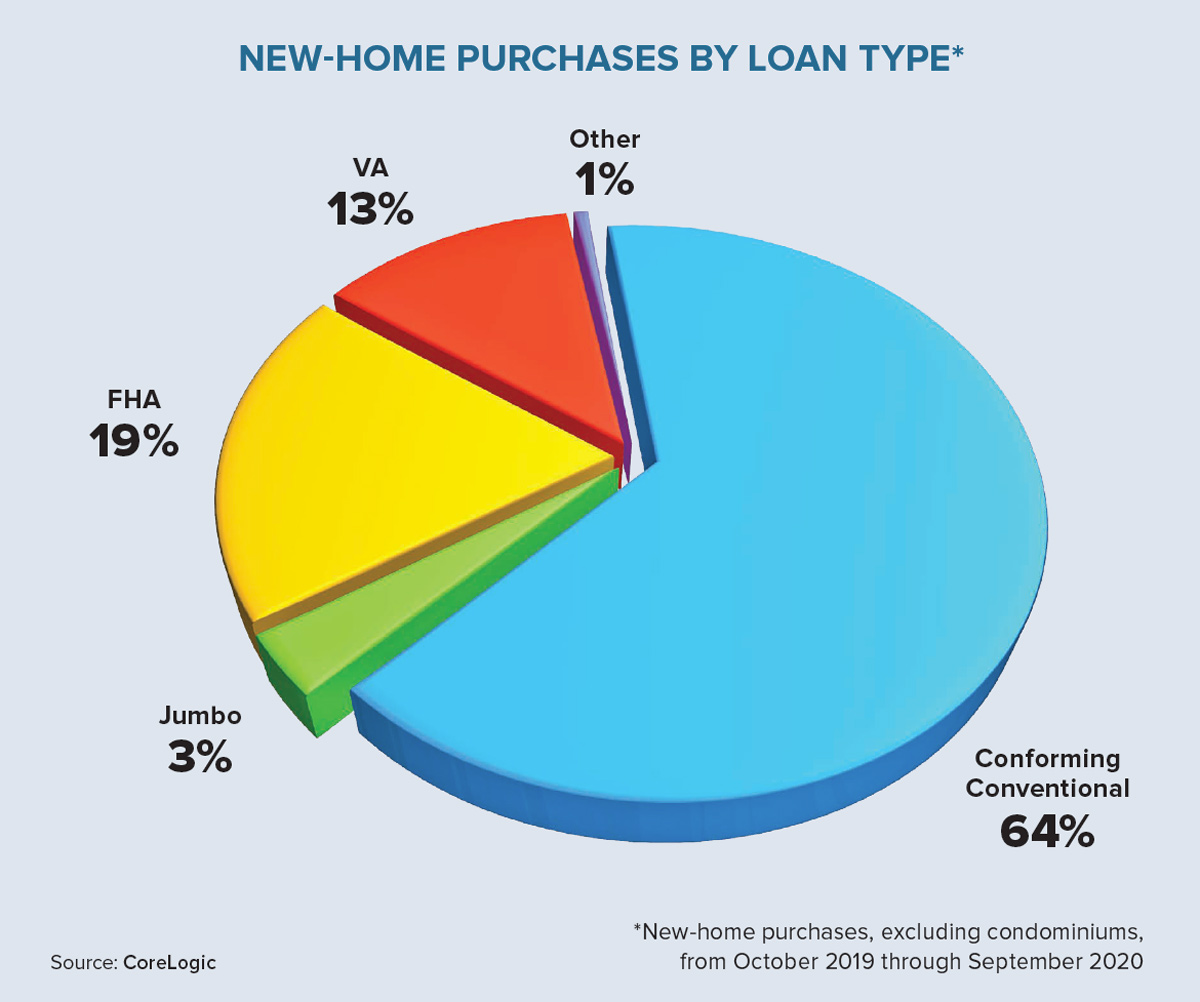The construction of new homes is important to meet the need for shelter of the expanding U.S. population. CoreLogic public records data shows that sales of new single-family homes were up 12% year over year in the six-month period before the COVID-19 pandemic hit in March 2020.
The pandemic derailed closings last spring but only temporarily. Completions of single-family homes rebounded by summer 2020, remained brisk for the remainder of last year and finished with the highest annual total since 2007.
The largest numbers of new-home sales were in large metropolitan areas in the South and West regions, markets that also have had large population gains of late. The U.S. Census Bureau estimated that the nationwide population increased by 1.2 million between July 2019 and July 2020. Texas, with an increase of 374,000 residents, accounted for nearly one-third of the country’s net population growth. Florida (241,000), Arizona (130,000), North Carolina (99,000) and Georgia (82,000) rounded out the top five states for population gains during this time.
These same states also accounted for the most new-home sales from October 2019 through September 2020. The Dallas and Houston metro areas topped the list during this period with more than 30,000 new-home sales. Phoenix and Atlanta each had more than 20,000 new-home closings. Austin and San Antonio rounded out the top six as each eclipsed 15,000 such transactions.
CoreLogic identified 13 markets that had at least 10,000 new-home sales during this 12-month period. All of them were in the South or West, and 10 were in the five states with the largest population gains.
The metros with the largest annual percentage growth in new-home sales were smaller markets in the South and West. There were 13 markets in which these types of sales increased by at least 25% between 2019 and 2020. Nine of them were in the five states with the largest population increases. McAllen, Texas; Lubbock, Texas; Crestview, Florida; Knoxville, Tennessee; Jacksonville, North Carolina; and Fort Collins, Colorado led this pack with annualized new-home sales growth of at least 35%.
Because new homes have the latest amenities and tend to be larger than older homes, they generally have higher price tags. Using CoreLogic sales data by metro area, these new-home sales are easily divided into three price groups: entry level, mid-level and premium. Across all metro areas, the new homes comprised about 6% of entry-level sales and about 19% of high-end sales. New homes typically accounted for less entry-level supply in high-cost areas, such as California, than in lower-cost markets.
To finance their new-home purchase, about two-thirds of buyers obtained a conventional loan, although the type of financing varied greatly by price segment. For sales of $250,000 or less, half of buyers used a conventional conforming loan while the other half utilized a government-backed loan through the Federal Housing Administration (FHA) or U.S. Department of Veterans Affairs (VA). For homes priced above $1 million, nearly all loans were conventional and about 80% were classified as jumbo mortgages.
With family incomes expected to rise and mortgage rates to remain low through 2021, household growth and the need for additional home construction will continue. CoreLogic expects new-home sales to increase this year to their highest level since 2006. The largest gains will occur in places with high population growth, and these states are projected to be Texas, Florida and Arizona. ●
Author
-

Frank E. Nothaft is chief economist for CoreLogic, America’s largest provider of advanced property and ownership information, analytics and data-enabled services. He leads the economics team responsible for analysis, commentary and forecasting trends in global real estate, insurance and mortgage markets. Before joining CoreLogic, Nothaft served as chief economist for Freddie Mac. Prior to Freddie Mac, he was an economist with the Board of Governors of the Federal Reserve System.

